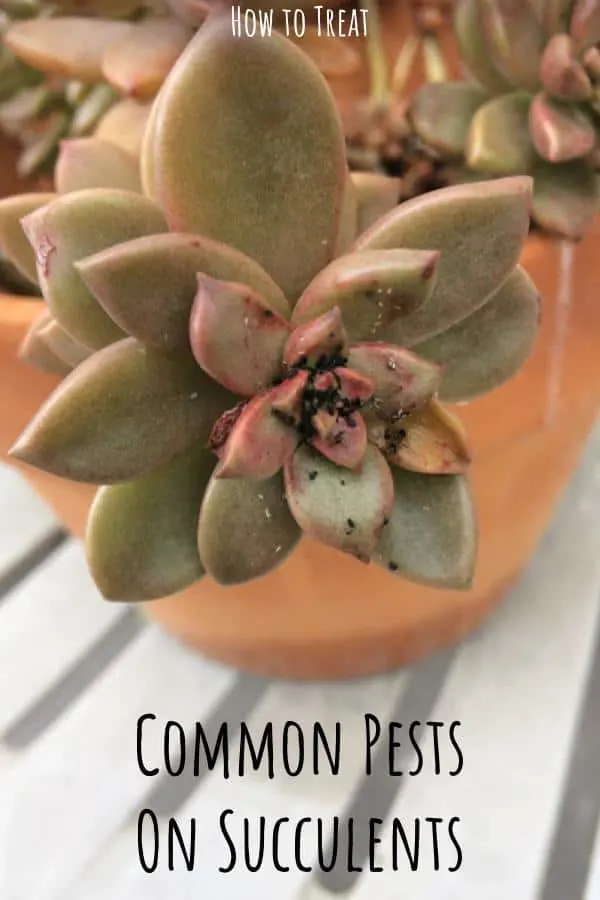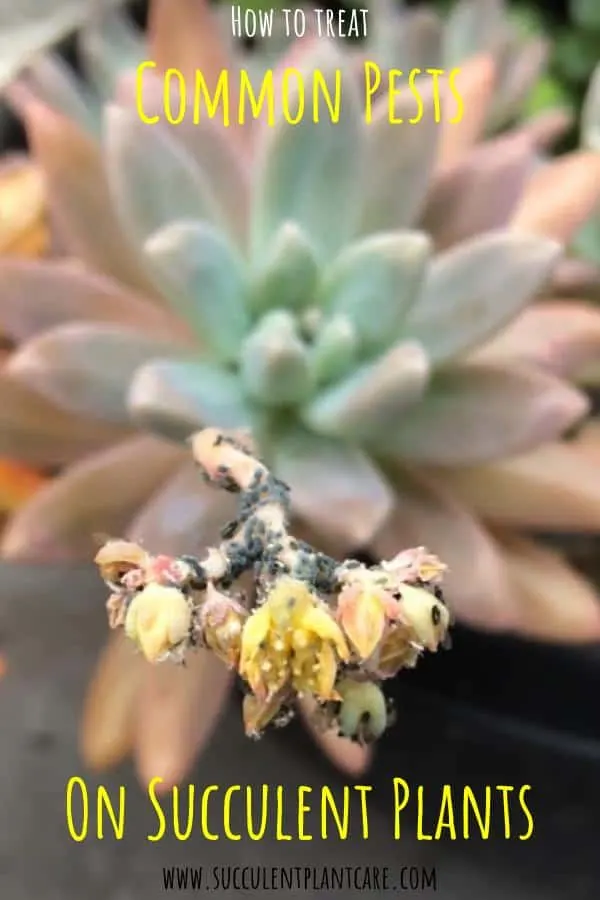Insects and pests are a natural part of gardening. If you tend to plants, you will naturally encounter insects. There are insects that are helpful to the health of the plants’ ecosystem, but there are those that are invasive and can take up residence in your plants and make their way to your other plants, infecting your whole collection.
Succulents for the most part are not bothered by common insects, but there are those that are extremely harmful and can cause more than an annoyance but can actually kill your beloved plants.

These pests can go undetected at first because they are tiny, or they may be hiding under your plants, and sometimes in the roots. But sooner or later your plants start showing signs that there’s something wrong. Your plants may start to look sick, discolor, and when you look closely you see telltale signs of pest infestation.
Having your beloved plants infested by pests can be disheartening and overwhelming, especially if you are the type of person who does not like bugs to begin with.
My own experience with pests is not anywhere close to nightmarish, but a few of my plants have been affected by bugs and pest infestations. I know from first hand experience it can be discouraging to find these pests on your plants. Here are some tips that will hopefully help remedy some pest problems that commonly bug succulents (pun intended haha):
Common Succulent Pests
Mealy Bugs
These are one of the most common pests in succulents and cacti. They are tiny, elliptical insects about 2-3 millimeters long, gray or light brown in color. They get their name from a waxy or mealy white material they produce. An early sign your plants have mealybugs is the white cottony substance you see on your plants.
Chances are you’ll spot these white fluff first before spotting the bugs. These insects secrete honeydew or a sugary substance, which can promote the growth of mold and make the plan more susceptible to bacterial and fungal infections. You can usually spot them on the leaves or the underside of leaves, and between the joints of the plant. They can easily spread from plant to plant.
Remedy: Use a cotton swab or Q-tip dipped in rubbing alcohol and apply directly on the bugs and anywhere you see the white cottony substance. Your plant will not be harmed while killing the bugs with this method.
Alternatively, instead of dabbing with alcohol, you can use a spray bottle and spray rubbing alcohol directly onto the bugs and white fluff. Some people like to dilute the alcohol about half strength with water .
Instead of alcohol, you can also use soap such as dish soap diluted in water. Try using a few drops of soap in 2 cups of water and shake to mix well. Spray directly onto affected areas where you see the mealybugs and white fluff.
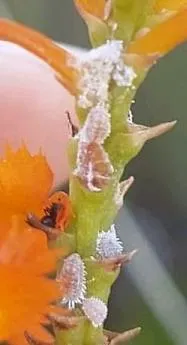
Unfortunately, mealy bugs do not disappear that easily and it may take a few treatments to get rid of the problem. Repeat the treatment about once a week as needed until the problem is resolved. Isolate the infected plant to avoid contaminating your other plants as mealy bugs can spread from plant to plant.
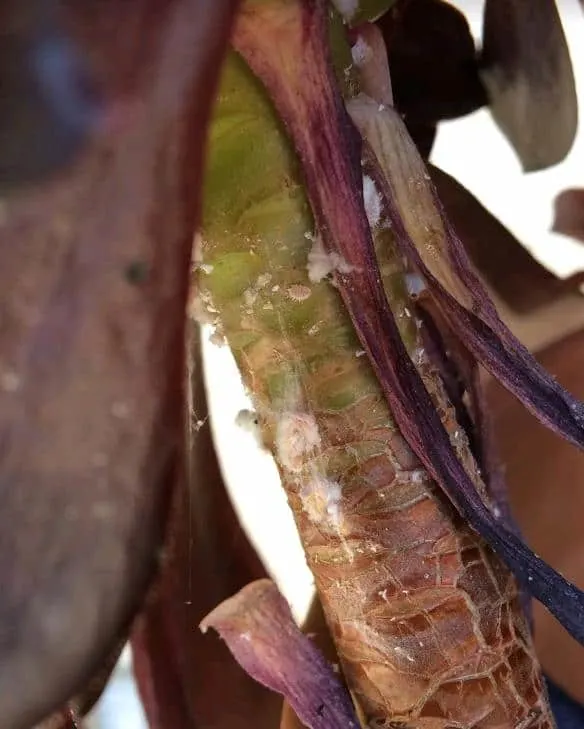
Mealy bugs can also be hiding in the roots. To get rid of them from the roots, you need to treat the plant and remove the it from the pot. Clean off the soil and wash off the bugs from the roots.
Spray the plant with rubbing alcohol or soapy water. Some people like to dilute the alcohol with water, about half strength. Let the plant dry for a few days and then re-pot in a fresh potting mix that is well draining and suitable for cacti and succulents.
Scale
There are over a thousand species of scale, which vary in shapes, sizes and color. There are two groups of scales that commonly attack succulents: the armored scale and the soft scale insects. If you see small, brown bumps on your succulent, then you may have a scale problem. These insects like to eat the sap of succulents, damaging the plants and making them susceptible to diseases.
Remedy: Remove any visible insects you see from your plant either by hand or by hosing them off. Scrape off or spray off any visible bugs from your plants. If the scale problem is not that bad, you can physically remove them from your plant. You can treat scales the similarly as you would with mealybugs. Use a cotton swab or Q-tip dipped in rubbing alcohol and apply directly on the bugs.
Alternatively, instead of dabbing with alcohol, you can use a spray bottle and spray rubbing alcohol directly onto the bugs. Some people like to dilute the alcohol about half strength with water .
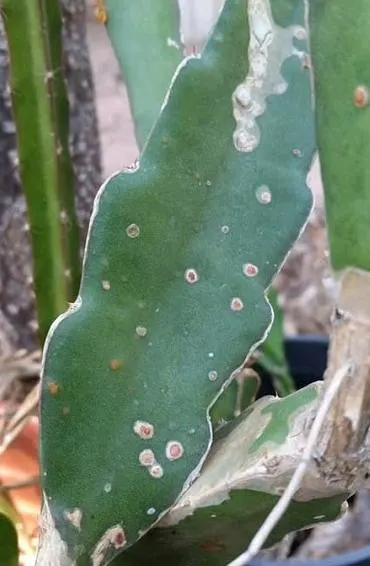
Instead of alcohol, you can also use soap such as dish soap diluted in water. Try using a few drops of soap in 2 cups of water and shake to mix well. Spray directly onto affected areas where you see the mealybugs and white fluff.
Some people have had success with neem oil in treating scales. If the infestation is severe, neem oil may not be enough. Dilute 1 tablespoon or 15 ml of neem oil in 8 cups of water and mix well. Spray the solution onto infested areas and the undersides of the leaves. When using neem oil, do so at night to prevent burning your plant from sun damage.
Unfortunately, these bugs do not disappear that easily and it may take a few treatments to get rid of the problem. Repeat the treatment about once a week as needed until the problem is resolved. Isolate the infected plant to avoid contaminating your other plants.
If the scale infestation is severe, you need to treat the plant by removing it from the pot. Clean off the soil and wash off the bugs from the roots. Spray the plant with rubbing alcohol or soapy water. Some people like to dilute the alcohol with water, about half strength.
Let the plant dry for a few days and then re-pot in a fresh potting mix that is well draining and suitable for cacti and succulents. When treating the infected plant, make sure to keep it away from your other plants to prevent spreading the infestation to your other plants.
Aphids (Greenflies or Plant Lice)
These are small insects with fat, teardrop-shaped bodies. They come in a variety of colors, from green being the most common. They are often numerous, and can be found sucking on leaves or flowers at the end of the stems.
They also expel a lot of sugary white substance or honeydew, as they feed. This sugary substance can encourage the growth of black sooty mold. Aphids suck on the plant’s tissues, causing the plant to have misshapen leaves and stunted growth.
Remedy: Spraying the plant that is infested with aphids and applying water pressure may do the trick and physically remove these insects from the plant. You can also treat the plant with a mixture of soapy water. Add a few drops of soap in water and mix well. Spray onto infested areas and undersides of the leaves.
You can also add vegetable oil to the soapy water. Put a few drops of soap such as dish soap in 1-2 cups of water with about 1 teaspoon of vegetable oil and mix well. Spray onto the infested areas where you see the bugs.
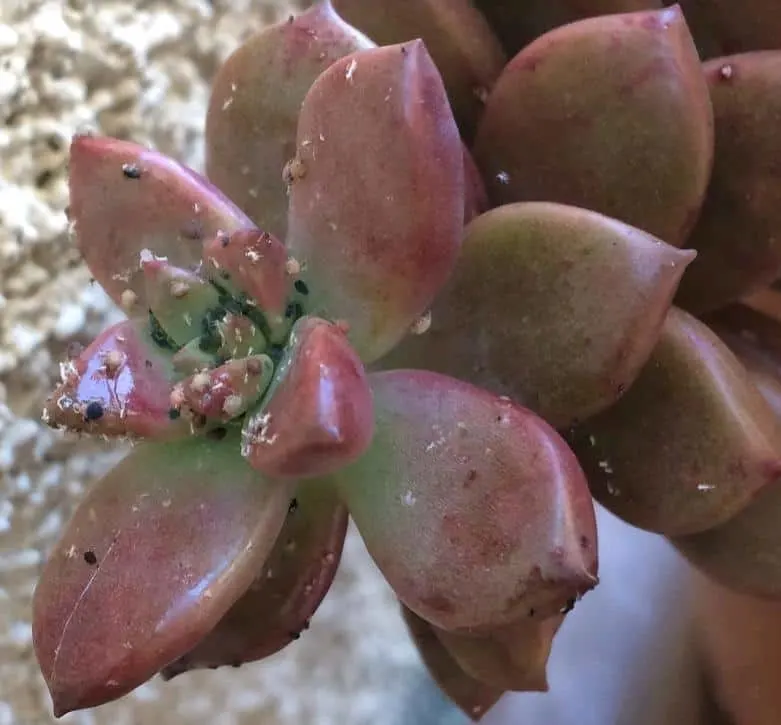
Neem oil have been effective for some people in treating aphids. Dilute 1 tablespoon or 15 ml of neem oil in 8 cups of water and mix well. Spray the solution onto infested areas and the undersides of the leaves. When using neem oil, do so at night to prevent burning your plant from sun damage.
Repeat treatment as necessary, about once a week, until the problem is resolved.
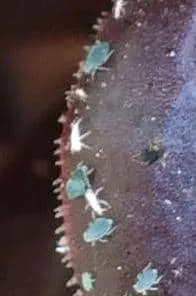
Spider Mites
Spider mites are very small and often go undetected for a long time. The most common variety is red. Spider mites love to suck on the sweet sap from succulents.
An infested plant at first becomes lighter in color and can eventually turn almost white or silvery, as the mites destroy the plant. Pay close attention to neighboring plants to catch infestations early. Early signs of spider mites are usually spider webbing and small brown spots on your plant.
Remedy: You can deal with spider mites the same way as you would with mealybugs. Use a cotton swab or Q-tip dipped in rubbing alcohol and apply directly on the bugs and anywhere you see the white cottony substance. Your plant will not be harmed while killing the bugs with this method.
Alternatively, instead of dabbing with alcohol, you can use a spray bottle and spray rubbing alcohol directly onto the bugs and white fluff. Some people like to dilute the alcohol about half strength with water .
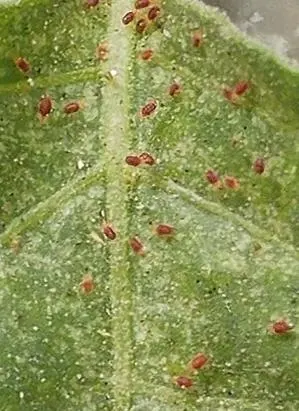
Instead of alcohol, you can also use soap such as dish soap diluted in water. Try using a few drops of soap in a cup of water and shake to mix well. Spray directly onto affected areas.
It will take a few treatments to get rid of the problem. Repeat the treatment about once a week or as needed until the problem is resolved. Isolate the infected plant to avoid contaminating your other plants.
If you suspect the infestation to be worse, then you might want to repot your entire plant. Remove the plant from the pot, clean off the soil and wash off the bugs. Spray the plant with rubbing alcohol or soapy water. Some people like to dilute the alcohol with water, about half strength. Let the plant dry for a few days and then re-pot in a fresh potting mix that is well draining and suitable for cacti and succulents.
Whiteflies
These are commonly found with leafy succulents. They are small, white, flying insects that reproduce very quickly and can be difficult to control. You can see whiteflies flying from the underside of the leaves when an infested plant is shaken. Like aphids, these insects produce honeydew everywhere on your plant which promote the growth of sooty mold.
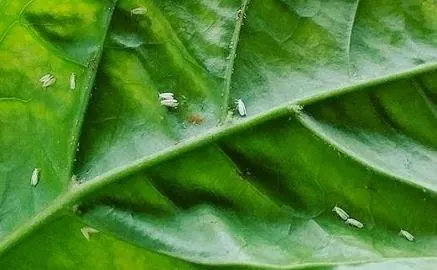
Remedy: Blast the flies off with water to remove some of the flies. Spray the plant with rubbing alcohol diluted in half strength with water. Instead of alcohol, you can also use soap such as dish soap diluted in water.
Try using a few drops of soap in a cup of water and shake to mix well. Spray directly onto affected areas. Repeat the treatment as needed.
Fungus Gnats
Fungus gnats are perhaps one of the most common houseplant pests. While fungus gnats are not as harmful to your plants as other pests, they can still be a pain to deal with and to get rid of. They resemble mosquitoes. If you water your succulents too much, or if the soil is constantly moist, the gnats will be attracted to it and will start breeding.
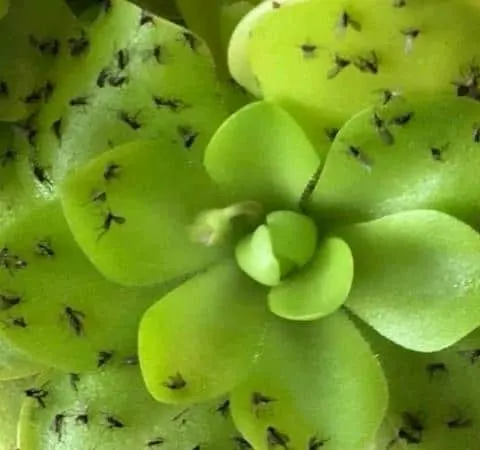
Remedy: Fungus gnats are attracted to moisture. Make sure you are not over watering your succulents and that the soil is allowed to dry out between watering. Succulents and cacti need to be in well draining soil. Repot your plants in a well draining potting mix suitable for cacti and succulents if they are sitting in the wrong medium to prevent moist soil.
For a natural remedy, sprinkle cinnamon powder on top of your potting mix. Cinnamon has natural anti-fungal properties and may help with the problem. You can also use one of those yellow sticky insect pads. The fungus gnats stick to these pads and may help lessen the problem as you deal with the source of infestation.
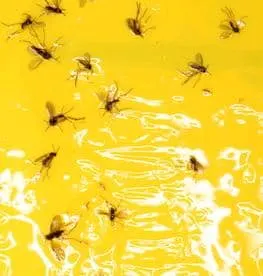
Ants
Ants are found everywhere in nature so they should be harmless on succulents right? Well, one or two ants here and there are fine but if you see an army of ants on your plant, it is often a sign that you have other insects such as mealybugs, aphids and scales on your plant. Ants farm these insects because they secrete honeydew or these sugary substance that ants love.
Remedy: Spray the plant with soapy water or insecticidal soap. Repeat as needed about once a week. You can also use ant baits near your plants to draw the ants away from your plant. Inspect the plant for other insects that are attracting the ants to the plants and treat as needed. Often, soapy water should help with the problem.
If you the infestation is worse, you might want to repot your entire plant. Remove the plant from the pot, clean off the soil and wash off the bugs. Spray the plant with rubbing alcohol or soapy water.
Some people like to dilute the alcohol with water, about half strength. Let the plant dry for a few days and then re-pot in a fresh potting mix that is well draining and suitable for cacti and succulents.
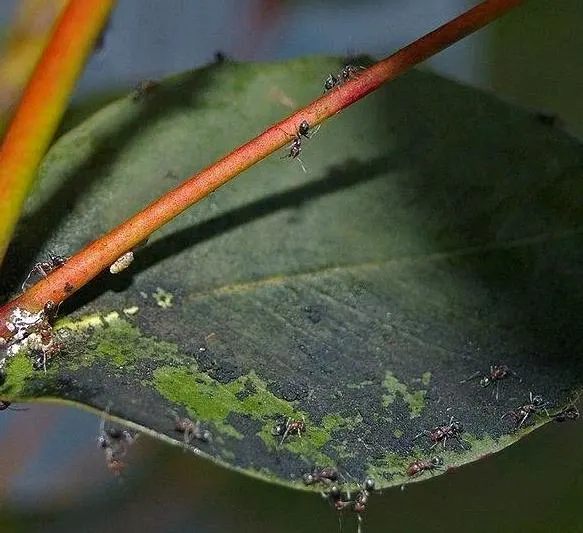
Pesticides and Insecticides
I like to think of pesticidal spray and insecticides as a last resort. They may be effective in killing the pests on your plants, but they also kill beneficial bugs and predators that are necessary for your plants to maintain a healthy ecosystem. Pesticides kill not just pests, but most bugs and beneficial insects.
Some of these insects you actually want on your plant as they feed on these pests. Introducing pesticides may destroy the health and balance of the plant’s ecosystem. Not only that, but they are also harmful to pollinators like bees.
If the infestation is very bad and pesticides are needed, take caution when handling these chemicals as they are harmful to other organisms and they can be absorbed through our skin.
Introduce Beneficial Insects
If you are looking for a more natural way to get rid of pests, you can try to introduce beneficial insects into your garden where the infestation is. These beneficial insects feed on these pests and will help control and eliminate the problem. The most popular insect to introduce is ladybugs.
Ladybugs can be purchased from gardening and farming equipment suppliers and may be found in your local nursery. Or they can also be easily purchased from Amazon online.
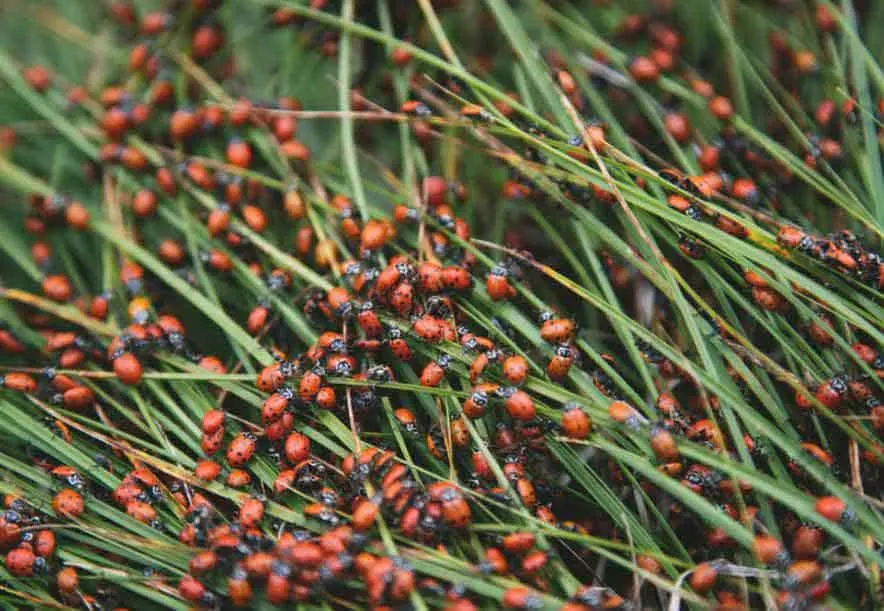
Sometimes, it may not be worth your time and effort to combat a bad infestation at the risk of infecting your whole plant collection. Luckily, succulents are fairly affordable and accessible so replenishing your plant collection will not be too costly.
If it’s a really bad infestation, you might want to take into consideration the amount of time and energy it would take to get rid of the infestation vs. getting rid of the infested plant and purchasing a new one.
Please click on How to Treat for Mealybugs and Aphids to see how I dealt with a recent pest infestation on my aeoniums.
